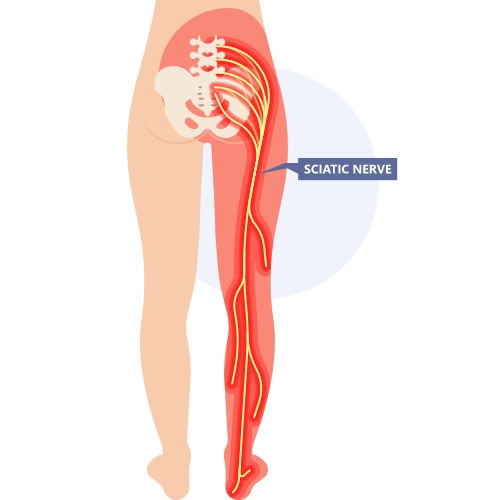3 Strategies to Alleviate Sciatica
- Stephen Strumos

- Jul 28
- 3 min read
Back pain is the most prevalent type of pain that we’ll all experience at some point in our lives. I dealt with a serious disc herniation and sciatica myself, and I can tell you, it’s no cup of tea.
Sciatica refers to pain caused by irritation of the sciatic nerve. It's most often characterized by pain that doesn't stay local to the lower back, but can travel down the leg (which makes sense when you consider the size of the sciatic nerve).

In my situation, I felt pain in my lower back, but my right hamstring and calf were also significantly sore. Every situation is different, but here are three valuable lessons I learned while rehabbing my sciatica.
Don't poke the bear
Sciatica and the lower back pain that follows, by nature an inflammatory issue.
The nerve is irritated, causing symptoms that can go as far down as your foot.
The biggest mistake people make when trying to relieve these symptoms is poking and prodding their sciatic nerve to calm it down (through deep stretches, myofascial release, massages, etc.)
This is the equivalent of picking at a scab every time it forms and wondering why it’s not healing.
Oftentimes, your best bet with sciatica is to find positions that put the nerve in a more relaxed position. So think less about a toe touching stretch and more about a cobra pose.


Get moving again
Research shows that a combination of back and hip strengthening exercises significantly improves chronic lower back pain and sciatica symptoms. (1)
Gently putting the sciatic nerve through its full range of motion is a great way to desensitize it and allow it to calm down.
I like using RDLs, Jefferson curls, back extensions, and glute bridges to do this. But wait, doesn't this contradict what we just said above regarding stretching?
While we don't want to irritate the nerve further, returning to normal movement (which includes flexing and bending forward) is also a rehab priority.
The key is to start in a conservative way that's tolerable and progress from there. For more guidance on how to do this, check out the system I use with my clients here.
The previously mentioned study also illuminates the most important factor when determining your prospects with sciatica and all types of back pain. In order to maintain the improvements gained by exercising, you must keep moving.
In other words, if you go into rehab mode, feel better, and then stop moving, there's a good chance your pain will return. Inactivity and a lack of strength around the sciatic nerve are common causes of why it happens in the first place. Keep moving while building strength and mobility around your hips and back.
You're not fragile, and you can heal
Negativity can be the enemy of recovery.
Back pain can be incredibly debilitating. It makes you feel twice your age.
And it’s easy with this feeling, especially if it sticks around for long, to develop the belief that you’ll never get better. Our mindset affects our behaviours, which affects our outcomes.
Research shows that most patients with sciatica have a favourable prognosis. (2) If you follow the two previous tips, avoid irritable positions and find ways to move and build strength, you'll be well on your way to feeling better.
Nerves, like muscles and joints, can heal. I'm proof of that, being pain-free from serious sciatica for 10 years and counting.
Our bodies aren’t machines; we’re affected by what’s between the ears just as much as we are by what’s physically going on in our backs. If you think you can (or can't) recover, you're right.
To your good health,
Coach Stephen
References:
Thanks for reading.
P.S.
Whenever you’re ready, here are a few additional ways that I may be able to help you.
Free:
Instagram: @CoachStrumos
*I share tons of bite-sized lessons and tips here
Paid:
1-on-1 Pain Management and Strength Coaching:
.png)



Comments